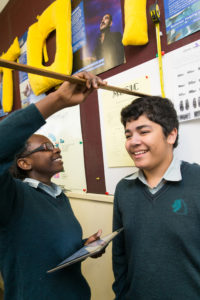CensusAt School kicks off next Tuesday
As many of you may already know, the Department of Statistics runs the magnificent, biennial CensusAtSchool TataurangaKiTeKura, a national statistics literacy programme in schools supported by the Ministry of Education and Statistics New Zealand. Students aged 9 to 18 (Year 5 to Year 13) use digital devices to answer 35 online questions in English or te reo Māori about their lives and opinions. The aim is to turn them into data detectives – and turn them on to the value of statistics in everyday life.

Photo: Stephen Barker. © The University of Auckland.
The latest edition of CAS starts next Tuesday, February 7, after the Waitangi Day holiday, and we’re hoping to get more than 50,000 Kiwi students taking part, which would be a record since CAS started in Aotearoa in 2003. Registrations have been open for a few weeks and are piling in, and I can see that so far we have 780 teachers from 507 Māori-language and English-medium schools registered – and there’s also a school from the Cook Islands, Tereora College. Check out if your local school is involved here.
CAS started as a pilot programme here, in 1990, run by Sharleen Forbes. As an international educational project, it started in the UK in 2000, and now runs in the UK, New Zealand, Ireland, Australia, Canada, South Africa, Japan, and the US. Good ole NZ, still punching above its weight in stats education.
There are questions common to all the censuses so comparisons can be made, but there are locally-specific questions as well – you can see the list of questions here. This year, we’re asking students about topics such as whether they get pocket money, and how much; whether there is there a limit on their screen time after school; and if anything in their lunchbox that day had been grown at home. In each census, students also carry out practical activities such as weighing the laptops and tablets they take to school and measuring each other’s heights, as in the picture of these Pakuranga College students. From mid-June, the data will be released for teachers to use in the classroom.
As this census is the only national picture of how kids are feeling, what they’re thinking and what they’re doing, journalists love the stories that flow from the results. The publicity isn’t only fascinating – it helps raise awareness of the value of statistics to everyday life. With any luck, some of the kids who do this year’s census will end up being our statisticians of tomorrow.